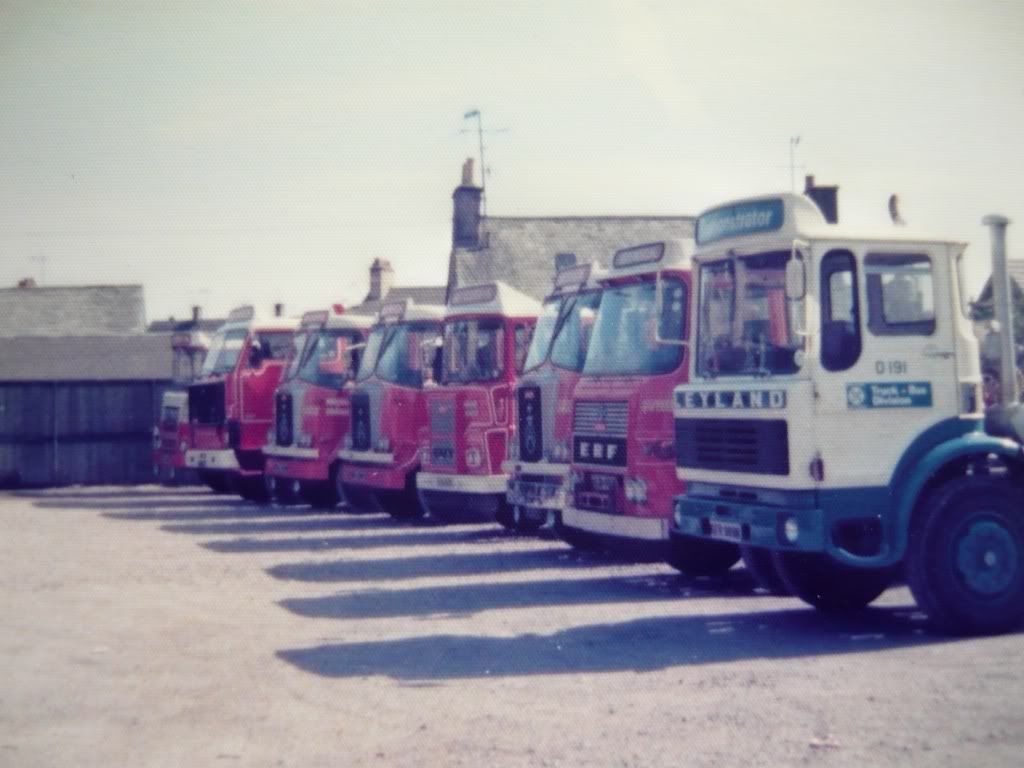I worked at Leyland from 1968 to 2004 (no! it wasn’t my fault it went down!)
When I started, Leyland was leading the way with the Ergonomic cab, I believe the first “flat fronted” HGV on the market, with decent proven engines, with the 400 series for the smaller trucks, and the 600/680 series for the heavy trucks, this was also fitted in various guises to buses & coaches, and also the Diesel Multiply Units (DMU’s) running around the railways, the engines were used in all sorts of different applications, generators, pumps etc.
Just about the time that I started there as a young lad, the government of the time “persuaded” the Leyland management to take on the ailing British car industry, in the form of Morris-Austin, Triumph and the other various bits that finished up with the BL badge on.
Leyland then for 10 years pumped all the profit that the Truck & Bus side were making into the car part of the industry, with very little progress being made on anything new in the heavy side, just the odd facelift to the present models.
Suddenly, the Leyland management found that the good products of 10 years ago, had now been left behind by the new trucks coming from Europe, along with the new 40 odd ton weight limit that was coming in. They had to do something quickly, so they came up with the Marathon for the heavier weight limit, with a codged up AEC engine pushed to it’s limits, (later you could have RR or ■■■■■■■■ and a new type of engine for the 24 - 32 ton market, ie. the “Fixed head 500” which turned out to be a disaster and finally broke Leyland!
The 500 engine gave good power, but due not enough time in R&D it had been rushed out into production. A new factory was built on the spurrier site just to manufacture & build the 500 engine.
Once in production. problems started to arise with the engine block cracking between the valves, as there were no cylinder heads, this meant that it was a cab off, engine out and complete engine strip down to fit a new block (approx 40 man hours turn around) This engine was also fitted to the National bus, so you can imagine the problems/ numbers there were. In fact Ribble motors sorted the problem by modifying things so the “old” 680 flat engine could be fitted instead.
The damage to the Leyland name was done, a once proud name was now the laughing stock of all the TV comedians mainly because of all the crap cars that were being produced with the Leyland name on them, and the “British disease” when the workforce in the car industry went on strike at the drop of a hat. Unfortunately, the British public tarred the Leyland Truck & Bus part with the same brush as the car plants. (Whilst I was there, there were only 2 proper strikes in the T&B side, one in around 1969 for 5 weeks, and one in the early 70’s for 2 weeks.
Transport managers had lost faith in the Leyland product, the public laughed at the Leyland name, the management buried their heads in their wallets, and in 1994 (or thereabouts) Leyland went into receivership.
There were a number of potential buyers for the Truck & Bus parts, but once again, the government of the day (as they had a large share in Leyland) decided who would have what. Volvo got the bus plant (& never did make it pay!) with DAF getting the trucks (we were making the roadtrain and the various types of it, plus the roadrunner, both good trucks of their day)
DAF stopped Leyland making roadtrains, as they didn’t want competition with their product in the same weight range. DAF then proceeded to milk Leyland of all that was any good, including their world-wide distributors, putting restrictions on everything.
I’ve never seen management “jollies” before of the scale that DAF bosses did. they even had a executive jet on hire twice or three times a week for trips between Leyland & Eindhoven.
When Leyland-DAF then went bust, the Dutch government bailed out the DAF part of the company, but the British government of the time wouldn’t do the same for the English part (what was left of it!)
Paccar bought the Leyland Trucks Assembly hall, along with the rights to the Leyland name, although DAF still have a % say in the business. (Paccar was one of the strong original bidders in 1994, but the government said No, it had to go to DAF!)
That left the Albion factories in Scotland and the crankshaft manufacturing & fabrication plant in Leyland. American Axles took these on as a package because they actually wanted to be able to bring American axles into Europe through England, without incurring import tax. By shipping completed axles to Scotland, having the wheel nuts screwed onto the wheel bolts, it then became an axle from Britain, thus avoiding any taxes.
They actually didn’t know much about the crankshaft manufacturing, but soon learnt that it was a money-maker, producing crankshafts for all the DAF engines, a Perkins marine engine, and the Rover 75 car engine, all produced on modern up-to-date machinery.
There was also the fabrication plant that produced lots of components for Leyland trucks & Volvo bus, but American axles or “Albion-Automotive” didn’t really want this side of the business, finally closing it down in 2005.
Due to the lack of business now for crankshafts (they’ve obviously not got replacement work to replace the Rover & Perkins stuff) that side is closing in the next few DAYS.
Volvo buses are now made on Poland.
If any dates are a little out, then sorry! I wasn’t making notes at the time.

